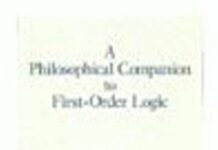
Ebook Info
- Published: 1992
- Number of pages: 384 pages
- Format: PDF
- File Size: 10.95 MB
- Authors: R. I. G. Hughes
Description
R. I. G. Hughes offers the first detailed and accessible analysis of the Hilbert-space models used in quantum theory and explains why they are so successful. He goes on to show how the very suitability of Hilbert spaces for modeling the quantum world gives rise to deep problems of interpretation, and makes suggestions about how they can be overcome.
User’s Reviews
Editorial Reviews: Review “A formidable and intelligent account of the (partial) Hilbert-space formalization of quantum mechanics and the inevitable philosophical ambiguities that result… A marvelous book.”―P. D. Skiff, Choice“The power and elegance of the quantum-mechanical arguments are excellently portrayed and the reader…could not help being impressed by the sheer intellectual beauty of the subject.”―Alastair Rae, Times Higher Education Supplement“[This book] complements the material covered in standard textbooks on quantum theory, in which the issue of interpretation of the theory is too often neglected.”―Eduardo Sanchez Velasco, Science Books and Films“Hughes has written the best self-contained introduction to the foundations of quantum mechanics yet to appear… Hughes is clearly a gifted teacher, and a casual look at the book may suggest that it is primarily a textbook. In fact, a definitive interpretive perspective is developed throughout the book.”―Allen Stairs, Synthèse
Reviews from Amazon users which were colected at the time this book was published on the website:
⭐It often seems that books with “introduction to” or “introductory” in the title are hardy introductions at all, but exhaustive treatments! True to form, Hughes’ book does not have “introductory” in the title, but is, in point of fact, an actual introduction! Rays, vector spaces, and the Dirac bra/ket notion are actually defined and explained. The author carefully walks the the reader through the spectral decomposition theorem. The statistical interpretation of quantum mechanics is also explained in terms of Hilbert Space.One element of the author’s approach to this topic that makes his treatment more accessible to the reader is his general avoidance of mathematical proofs. Instead, he just states the theorem in question, and sometimes backs it up with an example or two. He also provides the reader with one or two references to specific sections in other books that detail the proof. One such recommendation is that of Guido Fano’s book
⭐, which I found very helpful. An even better reference cited by Hughes is T. F. Jordan’s
⭐.Ultimately, I turned to this book because of my interest in John von Neumann’s treatment of the limitations that are generally believed to be inherent in quantum theory, such as that of the Heisenberg uncertainly principle. Von Neumann discusses these issues in his classic work
⭐. Hughes’ book is much easier to read than von Neumann’s and does a good job preparing the reader for this much more difficult and complete treatment of quantum uncertainty.Upon first reading Hughes’ book I found its lack of proofs a little difficult to accept. I should note, however, that I finally turned to this book after perusing a number of other books on Hilbert space that seemed to be nothing but wall to wall proofs–and which left me completely lost. After studying Hughes a little longer, I might be ready for one of these more formal treatments.Hughes’ book is written at a level accessible to students just finishing up their B.S. degree in physics, or just starting graduate school. He approaches each topic at an intuitive level that gradually eases the reader into the abstract world of Hilbert space.
⭐I’ll mostly second what other reviewers have said. This book will be especially interesting to those with a philosophical bent, but also valuable to physics students looking for a broader perspective on the relationship between QM and classical mechanics, and *why* Hilbert space is an appropriate representation. The statement on the dust jacket, “Very little mathematics is presupposed and what is required is presented” may be true in principle, but without some background in linear algebra, complex numbers, and calculus, this would be a very difficult slog. For proofs, I found the referenced Fano book quite difficult, partly because of the translation. Jordan’s *Linear Operators for Quantum Mechanics* is better, but very condensed. Another useful reference is Eduard Prugovecki, *Quantum Mechanics in Hilbert Space*. The latter two are both available at reasonable prices from Dover.
⭐R.I.G. Hughes’ book is one of the most original introductions to non relativistic quantum mechanics. It gives to us an actual,didactic, and balanced overview of the main foundational problems in the field; in addition, the book offers a personal analysis of the subject. I strongly recommend it to philosophers, physicists, and any person really interested in quantum mechanics. It, in fact, constitutes an important complement to the contents of the usual textbooks on quantum mechanics.
⭐This is basically a Philosophical/Logical Analysis of thefundamental assumptions of Quantum Mechanics. What it comesdown to in the end is that it decides, for example, theadoption of Hilbert Space to work in is (philosophically/logically)justifiable for the development of themathematical underpinning of Quantum Mechanics! So, whatelse is new?What other Infinite Dimensional Space, other than Hilbert’swould improve matters? For example, could QED have beendeveloped on a more promising basis using a different Space assumption than Hilbert’s? This book does not provide an answer.
⭐Great
⭐This book provides an excellent analysis of relevant and interesting points raised by quantum physics in philosophy as well as detailed and useful explanations of the physics itself – something many books cannot do. The explanation of the physics, the experiments and their results provide material to think on. Simple, arbitrary conclusions leave no room for thought – analysis of real life experiments provoke thought.The math is not easy for an inexperienced student, though the subject in general tends to preclude those. I had just taken a class on matrix mechanics and I was so greatful I had, as it let me actually visualize the equations rather than simply read the letters and symbols.An excellent launching pad for those who are already familiar with EPR, the slit experiment and quantum spin, etc. and want to know what it all means.
⭐This is one of the most lucid accounts of a subject famous for its obscurity.Hughes is one of a precious few who has one foot firmly planted in the science and the other in the broader philosophical tradition.His text, a contemporary classic, sits comfortably on the shelf in the company of Jammer, Cushing, Shimony and D’Espangnat. Everyone from beginners to seasoned professionals can profit from this work. I heartily recommend it to anyone keen to understand the foundations of quantum theory — a timely subject, now stirring to life after 60 years of slumber.
Keywords
Free Download The Structure and Interpretation of Quantum Mechanics in PDF format
The Structure and Interpretation of Quantum Mechanics PDF Free Download
Download The Structure and Interpretation of Quantum Mechanics 1992 PDF Free
The Structure and Interpretation of Quantum Mechanics 1992 PDF Free Download
Download The Structure and Interpretation of Quantum Mechanics PDF
Free Download Ebook The Structure and Interpretation of Quantum Mechanics

